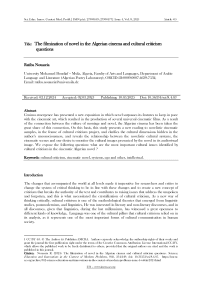The filmization of novel in the Algerian cinema and cultural criticism questions
Автор: Nouasria R.
Журнал: Science, Education and Innovations in the Context of Modern Problems @imcra
Статья в выпуске: 4 vol.8, 2025 года.
Бесплатный доступ
Cenima emergence has presented a new exposition in which novel surpasses its features to keep in pace with the cinematic art, which resulted in the production of several universal cinematic films. As a result of the connection between the culture of montage and novel, the Algerian cinema has been taken the great share of this connection, On this basis, this study presents a new reading to novelistic cinematic samples, in the frame of cultural criticism project, and clarifies the cultural dimensions hidden in the author‟s unconsciousness, and reveals the relationship between the novelistic cultural systems, the cinematic scenes and our desire to monitor the cultural images presented by the novel in its audiovisual image. We expose the following question: what are the most important cultural issues identified by cultural criticism in the cinematic Algerian novel ?
Cultural criticism, cinematic novel, systems, ego and other, intellectual
Короткий адрес: https://sciup.org/16010589
IDR: 16010589 | DOI: 10.56334/sei/8.4.05
Текст научной статьи The filmization of novel in the Algerian cinema and cultural criticism questions
The changes that accompanied the world at all levels made it imperative for researchers and critics to change the system of critical thinking to be in line with these changes and to create a new concept of criticism that breaks the authority of the text and contributes to raising issues that address the unspoken and forgotten, and this is what necessitated the crystallization of cultural criticism, As a new way of thinking critically, cultural criticism is one of the methodological theories that emerged from linguistic studies, postmodernism, and linguistics, He was interested in literary and non-literary discourses, and in all discourses, given that linguistics, during the last millennium, has witnessed a great openness to different kinds of knowledge, Language was one of the cultural pillars that cultural criticism relied on in its analysis, as it represents one of the most important forms of cultural communication in human society.
Cultural criticism, according to Arthur Isberger, is "an activity, not a field of knowledge, that is selfcontained, in the sense that cultural critics apply concepts and theories to high art, popular culture, everyday life, and a host of interrelated subjects." (Khalil, 1970, p. 301)
This holistic view that the critic gave to cultural criticism was one of its most important pillars, as cultural criticism is based on openness, emancipation, and universality; it is not specific to itself and a particular field, and this is what made it valid for all times and places, Through this argument, we see that the critic raised an important point in cultural criticism, as it is a procedural process, for all official and unofficial discourses, and this is what made critics accept it, as it absorbed their studies.
Cultural criticism came to untangle the knots of its predecessors and correct the course of cultural and literary studies by incorporating the idea of social, political and cultural context into its approach to discourses, This, in turn, opened the way to understand the various cultural relations in society and the arts, and this showed that the cultural critic does not proceed from a single-oriented idea in his/her readings and analyzes, Rather, he resorts to different knowledge, different perspectives, and utilizes different cultural constructs, such as feminism, anthropology, Marxism, and Freudianism, as he tends towards difference and liberation, by relying on the principle of cultural diversity.
Therefore, cultural criticism was able, through its procedures, to liberate the literary text from the remnants of structural and stylistic theories, which focused on the literature of the text more than its cultural interaction, as it did not come to demolish rhetoric and its rules, which dominated the text for decades, However, his revolution came as a subversive and constructive act at the same time, as he utilized rhetoric to serve his critical vision, which sees that the text does not stop at its structural boundaries, Rather, its existence is contingent on a specific cultural space that must be explored and studied, shifting the direction of criticism to the fields of popular culture, audiovisual arts, and cinema.
1 .The Dialectics of the Other in Algerian Cinema Scenarios, Novel and Film:
In addition to these writing styles established by Arab culture, cinema has come to crystallize a new awareness of fiction writing. International cinema has been exposed to the seductions of the narrative text since its emergence in the cultural arena, In an interview with Al-Nasr newspaper, researcher Mohamed El-Amin Bahri states that "the cinematic success of the proposed film had an impact on the popularity of the novel text, and its spread among readers. For example, Harry Potter's novels, such as the novels of Harry Potter, Bovary and Flaubert, and the novels of Bovary and Flaubert, The cuckoo's nest, Ghassan Kanafani's Return from Haifa, and Ahlam Msteganmi's The Body Memory, which leads to renewed readings of these fictional texts" (Chtouh, 2019, p. 253), Through these directorial works, it can be said that it was the beginning of the creation of screenplays, based on these fictional texts, which inspired and inspired international directors.
Because cinema is a mass art, the novel needed it to become more popular in the cultural milieu. Dostoevsky's Crime and Punishment and The Brothers Karamazov and Tolstoy's War and Peace did not become so popular until they were brought to life in their visual and aural signifiers, " Only in the late1950s did intellectuals begin to think specifically about how decolonization had given rise to a pattern of gazing characterized by a clearly delineated constellation of perceptual parameters and ideological traits. One early intervention in debates surrounding the de-colonial gaze was Alain Robbe-Grillet’s 1957 novel, La Jalousie (Jealousy) (SHARPE, 2022, p. 70) "
On the other hand, Algerian novels, in their cinematic form, reflected the idea of the colonial other, in all its cultural and military forms, as a basic theme on which these works were based, based on the cinematic image, and according to which their narrative pattern was formed.
In order to limit the centralization of the French colonizer, who worked in every way to eliminate the features of Algerian cultural specificity, novels written in French opened up to a range of cultural contexts and worked to expose the racist practices of the French occupation, The French language no longer weighed on their shoulders and was no longer a source of fear in the face of this injustice against their peoples. Instead, they turned to this language as a means of expressing their rejection of these colonialist schemes, and in light of these concerns that haunted the Algerian writer, the cinema, on the other hand, worked to immortalize works of fiction, from the world of text to film and directing, retaining the original theme and narrative character, Mohamed Dib's novels, The Fire and The Big House, have been among the interests of Algerian filmmakers, the visual image, however, succeeded in conveying the same idea,
" Often overtly or suggestively present in Algerian cinema is the shadow of war. Of violent war; a tautology that sets the two Algerian cycles of brutality - the war of independence from 1954 to 1962 " (boudraa, 2017, p. 706) "
If literary language is the novelist's tool, the visual image succeeds in communicating the same idea, This is what we will discuss in our study, by interrogating a number of cultural patterns and antagonistic binaries, based on the mechanisms of the movie scene and the quoted written text, We begin by tracing the cultural specificity that characterized the relationship between the ego and the other, given the civilizational conflict that inevitably characterized the relationship between them.
Cultural criticism has tended to dive into the reality of the concept of hegemony as a serious issue that has been a source of tension and crisis in relation to social and economic phenomena, Hegemony was linked to the ideas of the ruling classes, colonialism, and the forms of authoritarian practice through which it was realized, The writer Mohamed Dib, in his novel text, and the director Mustafa Badie, gave a cultural image of this brutal colonizer, which sought to create cultural margins around it, based on the politics of imperialist hegemony and their monopolization of peasant rights, And what emerged over several decades was a discourse on hybridisation, on alterity or on discussing otherness from different positions " , (boudraa, 2017, p. 707) Mohammed Deeb describes this scene: "The settler-colonizer considers the peasant's labor to be entirely his right, and even wants the people themselves to be his... Thousands of hectares of land used to belong to one French settler, and these settlers are all the same, they arrived in this country with perforated shoes, and now they own innumerable tracts of land" (Mohammed Dib, 1970, pp. 28-31).
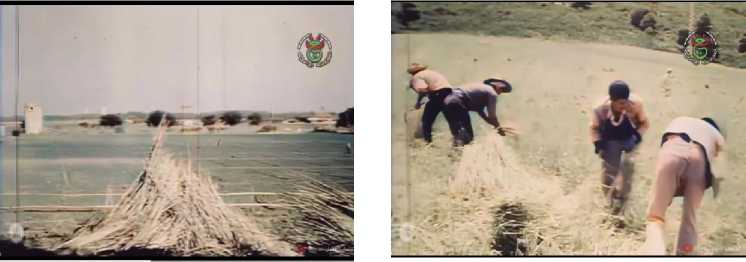
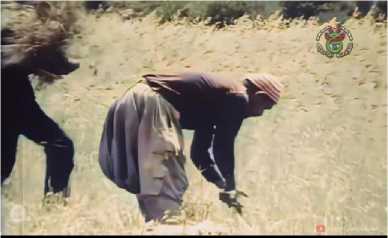
Mohamed Dib's text and filmic scene open up to the reality of the troubled self and the determinants of its relationship with the other, placing the Algerian viewer on the thresholds of the theater of a history of suffering, Based on the writer and director's reliance on rhetoric and visual imagery, as a humanitarian-driven format that seeks to expose and dismantle the features of colonial hegemony that extended its influence before the revolution and worked to prey on the freedom of Algerian citizens, The working class in Algeria presented a new consciousness as a symbol of resistant patriotism against the will of hegemony, and sought to undermine the colonial authority and decentralize it, based on workers' strikes, which carried the signs of a new revolution and brought to the surface a new reality, the necessity of open confrontation against the colonialist, Through this visual image, the writer and director shed light on the unspoken aspect of Algerian history in the archives of the Beni Boublane region, in an attempt to insert it into the corridors of popular memory, revealing the brutality practiced against the workers, including starvation and arbitrary arrests, They experienced a wave of existential anxiety, for their troubled present, their unknown future, and the dread of this inevitable and imposed fate, It can be said that the narrative discourse of both the director and the novelist tries to present a picture of France with its brutal and oppressive face, based on physical eliminations and the deprivation of freedoms, as the pattern of violence recurs throughout the pages of Mohammed Deeb's text, carrying with it a state of crisis and an atmosphere charged with arrests in a cultural anatomical painting that remained immortal in memory. ..." The police would come to the neighborhood for a thousand and one reasons and would arrest young and old people, and then no one would ever see them again " (Dib, 1970, p. 44)
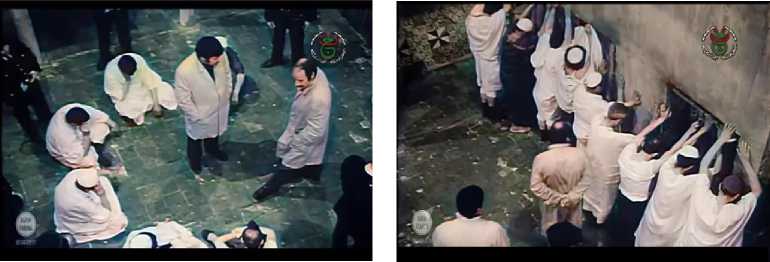
Perhaps the question that dominates the recipient's mind is, why did Mohammed Dib focus on these cultural patterns in his novels? We mention workers and peasants, and here it can be said that this specialization came because most of the conflicts that came to light during that period emerged from the category of workers, as they are the most aware of their fate and the existential illusion they live in.
The materialization of the issue of hegemony in fiction and cinema, as well as in studies of colonial discourse, has given rise to many cultural issues that have troubled people in their relationship with the other, In addition to confiscating their consciousness and freedoms, colonial culture imposed several methods of control and domination during their moments of historical intersection, This systematic policy was the beginning of the restriction of the people within a network of cultural determinations, and the narrative context of this case refers us to the statement of a commander to Omar :
"The law forbids them from owning their own land, the law has changed, there is a new law, the old title deeds have been canceled, no one inherits land from his ancestors, possession is confiscated and so is the commons ... in the land people replace people, This is how the owners of the land were expelled from their land and became strangers to it. There is not a day that passes without seeing a family approaching the city, the father with a basket on his shoulders, the mother with a baby on her back ... They are now renting themselves out to those who stripped them of their land". (Mohammed Dib, 1970, p. 67)

The narrative and film adaptations echo Gramsci's statement that " domination is not only achieved through the power of the dominant, but also through its ability to make us accept it and recognize its validity " (Khalil, 1970, p. 322), The colonial power transformed a group of people into a mass of human beings, expendable and submissive, and fell into the net of the colonial logic, which did not hesitate to exercise all forms of domination, making the ego appear as an absent and fractured image, dispossessed of identity and living with its reality, The narrative discourse of both the filmmaker and the novelist attempts to present a picture of France as brutal and oppressive, based on physical killings and the deprivation of freedoms, The pattern of violence is repeated throughout the pages of Mohammed Deeb's text, carrying with it a state of crisis and an atmosphere fraught with arrests, in a cultural anatomical painting that has remained immortal in memory.
2 .Feminine power, undermining the masculine paradigm:
Cultural criticism has worked on touching the issues of the female text and the unspoken side of women's lives that are concerned with societal issues and challenges, The patriarchal, patriarchal authority worked to exclude her existence and make her hostage to cultural patterns, but the film text made her the center of the narrative, and a cultural and existential bet, by bringing her out of silence, and self-definition, Mohamed Dib's novels and film scenes included cultural representations of the critique of masculinity, the soft undermining of patriarchy, and scenes of frank revelations and confessions, He says: "Zahra blinked/ Suddenly realizing why he had come to her, and stood near her, she raised her head, in a violent and defiant movement, and stared at this big, flaccid, mute face, the face of Qara, and a flame of hatred flashed in the child's soul. What a filthy dog" (Mohammed Dib, 1970, p. 181).
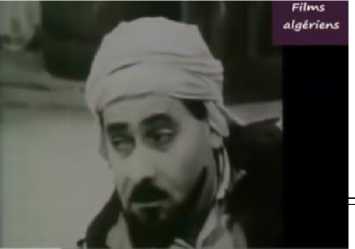
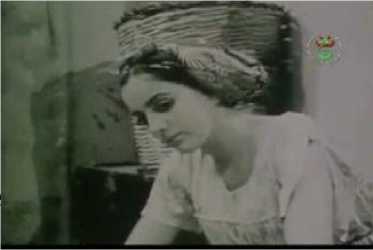
The scene overlooks a violent textual and linguistic uprising, and a revitalized female narrative voice, which appeared as an attractive sign, provoking the male recipient, and increasing the intensity of the undermining, in the words of Mohammed Deeb: "She raised her head with a violent and defiant movement." Through this confession, Zahra appears to be a protector of the feminine pattern, exercising her authority in the annihilation of virility. Another female scene came charged with a rebellious consciousness, tinged with physical torments, which created an inner strength for the woman, pushing her out of her ordeal, emancipating from her world, and starting to fulfill her cultural role, within the male institution. Deeb says:
"Mama: Your family will be the first to know what I saw, and they will know your worth, and God is my witness that nothing will stop me from announcing what I saw." As soon as the woman said this, Qurra's huge, muscular hand came down on her face, The tears, running down her cheeks, were snatched from her eyes by the force of the blow, and he put his arm around her neck to strangle her, and Mama began to receive the slaps on her face indifferently, and Mama fell to her knees, and the man's fist came down on her face several times". (Mohammed Dib, 1970, p. 193)

The narrative text is interwoven with the filmic scene, revealing the emancipation of Mama's character, who has lived in a patriarchal male world that is only good at exclusion, She remained trapped in that life and its norms, confined to household chores and the desires of the man, who reduced her identity to her body, In addition to her opaque presence as a social victim, she was present in a cultural image in which she dared to transgress male norms through violent verbal levels, paving the way for a new crisis with the stallion. The act of freedom practiced by Mama was provocative to her husband, who found physical violence as a way to deter her, According to Al-Ghadhimi, “the alienation here has a double dimension. The male not only alienates the female, but he himself falls prey to alienation as he succumbs to the savage sense of this phallic culture and persists in alienating the woman because he fears that she will alienate him if he does not maintain her control over him.” (al-Ghadami, 2006, p. 18)
Mohammed Deeb gave another example of the humanity and mercy of women in the novel The Big House, despite the harsh social conditions imposed on them by the stallion, The character of Aini is an example of a struggling woman, who struggles for the sake of her family. Aini enters the stage of selfemancipation, through prayer and supplication, free from the dirt of reality, and identifies with them in search of her own self, Prayer represented a textural equivalent, multiplying Ayni's presence in this life and awakening her human spirit. Omar says:
" His mother was praying, she stood frozen for a long time, and suddenly she knelt down and then prostrated " (Dib, 1970, p. 35)
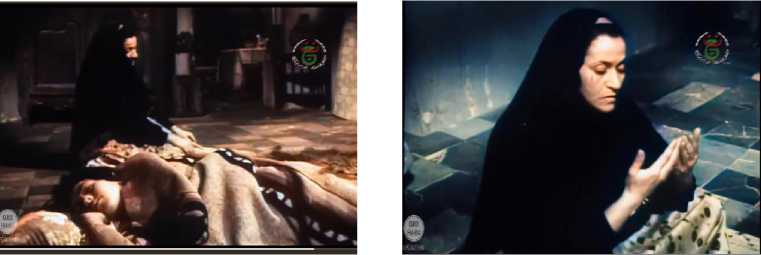
She escapes to a spiritual world, through monologues, where she experiences a transcendent spiritual labor, in which she explains her insides, her psychological desires, realizes her motives, and realizes something of herself, dissolving the barrier of time between them, in search of a path that will lift her out of this stressful world, “Although the novel bears a pessimistic character, there are some signs of love and warmth on the second bank, for if it were not for the love that restored the narrator's heart to Nahar, the idea of the novel, based on confrontation, rebellion and confrontation with all the values of aggression, injustice and oppression, would collapse with him”. (Kawha, 2021, p. 330)
3 .The tensions of female identity between reality and the body:
The female text in cultural criticism is considered a cultural bet, through which Mohammed Deeb has created a new horizon of expectation for the recipient, and as a new title to bypass male and societal censorship, The imposition of female identity in his novels comes through body language, Women have often run away from their femininity and have a confused relationship with their bodies, before Depp broke through this perception and filled in the cracks in women's lives, who “seems to want to put the man in front of all that he does not know, or what he wants to ignore, reconstructing the societal memory, in her own way, with her own distinct angle of vision " (Mansour A. , 2006, p. 205), Mohammed Deeb says in this context: "Zohoor leaned over him and gagged him with her hand, telling him not to move, Omar was still, and the girl's hand slid over his body with ease, and he felt her body lying beside him, with a sound like the rustling of silk. It is a sugary odor, from which comes the smell of ripe fruit, untouched by hand"(Dib M. , 1970, p. 64)
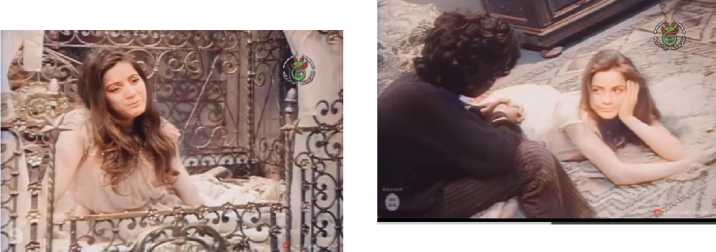

The movie scene and the narrative text reveal a consciousness that overflows with bodily desires and Zahra's sexual identity, The body becomes a space in which she explodes her seduction and transcends herself, “A woman has a special say in her relationship with her body, she must first own this body, free herself from dependence on father, husband, clan and nation, and secondly, she must know her body, so that expression through it can be a new saying ". (Noureddine, 2009, p. 292)
Through dreamy scenes, Mohammed Deeb continues to break narrative taboos, allowing his protagonist Zahra to play the game of skipping and emancipating her body, and a sense of desire creeps in, sensing her freedom, She begins to feel her feminine self, after a male siege that stifled her desires and made her a feminine, gelatinous, passive object, The flower of that virgin girl, the seductive female face, floats through the circles of female manifestation, making her body, detached from reality and immersed in dreams, he says:
“Zuhur dreamed that she was wandering in a country of mountains and forests, the grass that enters her neck, when she lies in summer on the ground of the fields, bothers her like flies, so she passed her hand, while sleeping, on her smooth body, and she felt that her body was very soft, she stretched her arm and returned to caress her body with movement and age " (Mohammed Dib, 1970, p. 194)

Through this figurative scene, naked female language permeated the body of the text, and Zahra's desires exploded, through dreamy rituals and linguistic levels, to make the details of her body overflowing with desires, It becomes a seductive, provocative cultural authority for the male recipient, Possessing the power of action. Mohamed Dib gives another example, in which the narrative is intertwined with female suffering, which was publicized through harsh physical representations that Algerian women experienced, She became a trapped female, living in oppression, a female shaped by male culture and made to serve it. Behind the exhausted body and the cloak of female silence, Deeb narrates her suffering, As the weakest link in the pyramid, he recounts its bitter reality, in which it flounders: " "As for the women of the Poblans, the old curse follows them, their bodies soon become the bodies of porters, their feet, when they step on the ground, are dug up with deep cracks, their beauty withers away in a flash, one way or another, and the only trace of beauty is their slow, sweet, melodious voice ... But there is a hunger in their gaze". (Mohammed Dib, 1970, p. 28)

Women lived in a country that stripped them of their rights and restricted their roles, so this is a cultural image of Algerian female identity tinged with much suffering and oppression; women lived in a country that stripped them of their rights and restricted their roles, This was expressed in the movie scene adapted from the fire, which gave a dull picture of women's lives, as they have no right to exercise their freedom, outside the scope of the political authority, which the novelist made male, It is clear that this textualization of the female, between her image in the text and her audiovisual image, was a cultural marker that attracted the attention of the recipient, thus transforming her from her traditional stereotypical image, to performing a post-textual textual role.
4 .Representations of harem and masculinity in the movie text:
Textual scenarios and movie scenes refer us to other cultural issues that Algerian narratives worked on, most notably the issue of virility, which was divided into two types:
The novelist and director used to include cultural contexts in their scenes, which gave them appeal to the reader, and showed us a new horizon in receiving the issue of virility, which has long been associated in literary memory with poetic talent, However a new trend in criticism has emerged that goes beyond the exclusionary and narrow alphabets of old criticism, Al-Ghadami addressed the issue of the Arab stallion industry, with a different vision, and according to his opinion, virility takes over some qualities and moral ideals, the most important of which were: He emphasized that virility goes beyond its poetic aspect, and that it is a characteristic of generosity that Arabs take as a pillar of their cultural life.
Muhammad Deeb says: "Omar circled around the square, appeared from behind a dalb tree, dropped at the boy's feet what was left of the piece of bread, and pretended not to notice that the piece of bread had fallen, He stopped and spied on him, and saw him staring at the crumb of bread from afar, then stealthily taking it and devouring it... Omar came up to him and put something in his small, narrow palm, and the boy looked at Omar without saying anything, The boy closed his eyes and opened his mouth, so 'Umar ordered him, and 'Umar quickly took out a cloth from the bottom of his pocket, put it on his tongue, and disappeared". (Dib m. , 1970, pp. 16-19)
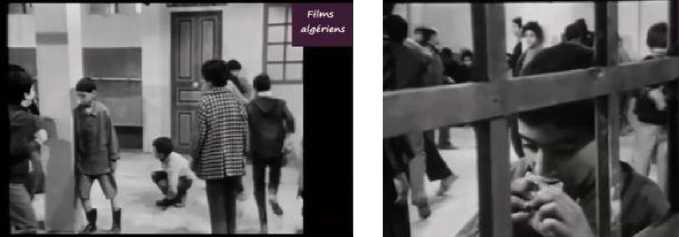
In Mohamed Dib's novel, we are struck by this sentence, which includes a manifestation of male virility as a cultural value that was present in the history of the Algerian people in the first place, The hero Omar appears in the character of the stallion, a character that the director also paid attention to the way he thinks and performs his childish role, and the writer gave him a different image from the rest of the children of his generation, It can be said that the cultural environment in which he grew up, and its reflections on his life, shaped him into a character that is laden with the concerns of others.
Another narrative level and cinematic scene, charged with virile female textual codes, psychological emotions, and intensified revelation of the female subject's innermost self, In contrast to the traditional stereotypes of women as subservient and subservient, and according to a male perspective, or as Moroccan critic Said Benkrad called it “the masculine eye”, It means that female rights have often been measured on arbitrary concepts, stemming from patriarchal authority, in its various forms, In this sense, Mohammed Deeb's text, with its audiovisual scene, is based on violent linguistic revelations, as Aini says: "That man is good for nothing, he left us misery. He buried his face in the dirt, and all kinds of misery fell on me. Misery has been my lot all my life. Now he's quiet in his grave. He never thought of saving a single penny. And here you are, clinging to me like a leech sucking blood. I was stupid. I should have left you on the street and run away to a desolate mountain." (Dib m. , 1970, p. 29)

This scene is categorized within the discourses of masculine representation and "in the betrayal of cultural practices that establish a counter and resistant version (the discourse of the harem), It aims to expose a past consciousness, based on power, domination and marginalization, as a cultural pattern (the discourse of masculinity)" (Bouiran, 2021, p. 519), Mohammed Deeb, in addition to his approach to the lackluster feminine gender aspect of victimization, created a new horizon for the viewer, Through the character of Aini, he painted a picture of the tyrannical female, shaped by cultural conditions, and defined by her condescending personality against her family, and Omar, the young child, was the character who suffered the most from his mother's arrogance and injustice.
The author establishes the institution of the harem, and its manifestations in Dar al-Subitar, which is distributed in every scene of his novel, and perhaps the most prominent expression of this pattern, and its embodiment in the words of Mohammed Deeb:“The men go out early in the morning and are seldom seen in the house, so that only the women remain in the house. The courtyard, covered by the tangled branches of the dalia, is full of them, they fill it with their coming and going and crowd the entrance, and in the kitchen they never cease to chatter about the well.”(Dib M. , 1970, p. 66)
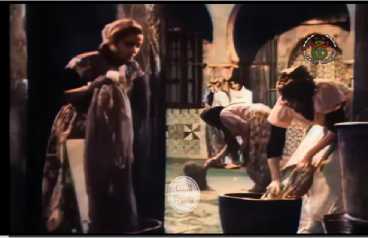
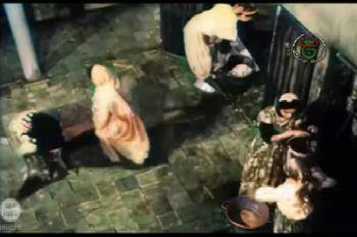
The cultural manifestation of the harem is embodied in a filmic landscape in which their freedom, which cannot be taken away, is shaped within the narrow confines and walls of Dar al-Sabitar,This freedom becomes one of their own possessions, away from the authority of the man, which is absent in the scene. The attempt to absent him in the script is a desire by the writer to expose the feminist space, enter its worlds, and expose it to the audience without censorship.
The threads of the harem pattern are established in another scene, which expresses the different existential status of women. The cultural image of the previous scene was one of absolute freedom, which the female enjoyed inside the Sabitar House, However this situation changed once she left this institution for an institution that regulated her freedom within the framework of the concept of honor and sanctity, and the limits of sharia and hijab.The latter may take on two connotations for the recipient, some of whom see it as a restriction that captures a woman's body and confiscates her freedom, while others see it as a protection for her, says Mohammed Deeb in this context:“People were passing by, silent and indifferent, and women, veiled in white handkerchiefs, as if they were ghosts, paused for a moment, then picked up their pace...In their haste, most of them did not have time to put on the hijab: one threw a towel over her head, another covered her with a shawl, and another merely rolled up the hem of her skirt from behind and pulled it over her head.”(Dib M. , 1970, pp. 34-84)
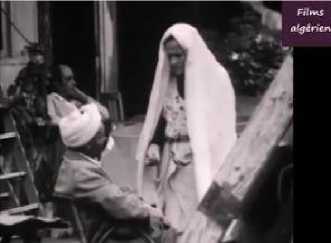
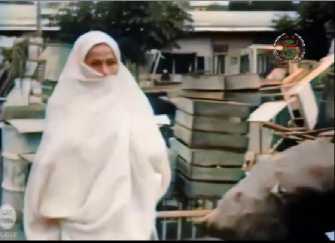
This different status of the woman proves to us as readers that the writer and director's bet on the female body is a moral and cultural bet, before it is a seductive value, The female body, outside the space of Dar al-Subitar, is now only moving according to the social censors and the limits set for it by customs and traditions, which it is not allowed to violate, and liberation against these systems is a form of rebellion.
5 .The image of the Algerian intellectual and the stakes of the nation:
Ahlam Mostaganmi says: "In every homeland we have a graveyard ... At the hands of everyone we died, in the name of all revolutions and in the name of books"(Mostaganmi, 2000, p. 248)In this situation, the Algerian intellectual found himself confronted with national stakes, national obligations, and a missing homeland, due to his sensitive position in society, We find the novelist Mohamed Dib, who stood on the clarification of his cultural image, and across different elite groups, starting with the image of the intellectual child, which the colonial authority worked to shape, according to what serves its existence, Through the policy of Frenchizing education and working to erase the national components, such as language, history and religion, the intellectual found himself in a homeland that does not know its contours or borders and is engaged in an authoritarian culture that does not express his identity, Deeb says in this context and through a linguistic mosaic: "Mr. Hassan walked to his pulpit, flipped through the pages of his large notebook, and said: Homeland. The boys didn't care about the news, they didn't understand and the word in the air shook. “Who among you knows the meaning of the word ‘homeland’?” said Ibrahim: “France is our motherland.” When the students heard this, they all wanted to speak. They chanted the same phrase in unison" (Dib M. , 1970, pp. 22-23)
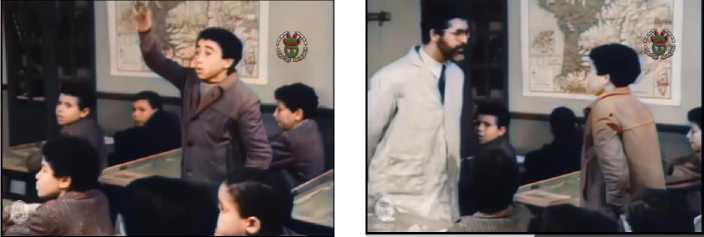
France's war was more of an intellectual and cultural war than a military one, as it clamped down on the identity and nationality of the young intellectual so that he could not discover the truth about his homeland, and he lived an existential alienation from a young age.
Between the ribs of alienation, belonging and marginalization, Mr. Hussein, in a patriotic scene, tried to regain some of his existence and stolen patriotism through his charged stance of rejection and pride, However, he reconnected himself with his homeland, as his historical memory and sense of patriotism refuse to be forgotten, bypassed and subjugated, says Mohammed Deeb: “Omar was surprised to hear the teacher speak in Arabic,” the teacher said in a soft voice with a tantalizing violence: "It is not true what you are told, that France is your homeland. Mr. Hassan controlled himself, but he still looked troubled, for a few minutes he was tempted to say something else too, but what could he say? Isn't there a force greater than himself that prevents him from saying what he wants to say?" (Dib m. , 1970, p. 35)
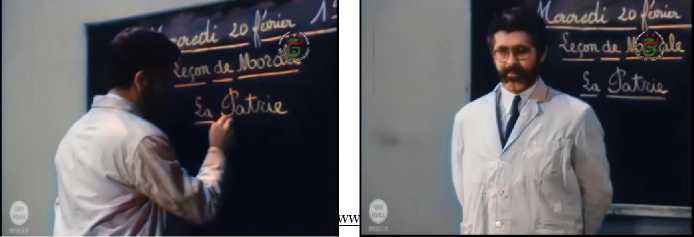
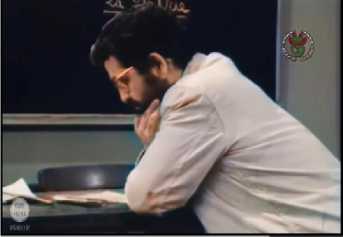
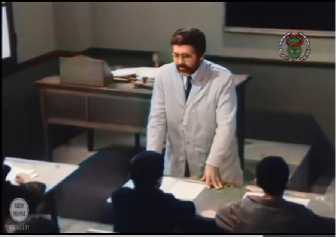
This was the reaction of the intellectual to the shock of colonial civilization and its falsity. The marginal status of the Algerian people by France was reflected in the attitudes of the intellectuals, It revealed the imbalance in their system of ideas and patriotism, which was refined by France according to its assimilationist Westernization ideology.
In light of the negativity that characterized the life of Algerian society and the darkness that overshadowed the cultural reality, there was an urgent need for a group that uprooted this country from its darkness, Mohamed Dib and director Mustapha Badie, through their immersion in the revolutionary struggle and confrontation with the authority, stopped to explore this pattern through the militant character, Hamid Siraj, and their portrayal of the cultural atmosphere in which he lives ... He says:"It was rare not to see in the pockets of his wide, old, gray jacket, books whose covers and pages were detached, but not lost, because Hamid never let them be lost, and he was the one who lent Omar that book, titled Mountains and Men, At night, Hamid Siraj read by the light of a small lamp. Night is the period of calm, the atmosphere of agitation in the Spitar House, which has been building up since eight o'clock in the evening. At this moment, women would go on voyeurizing, Hamid often, he would read".(Dib M. , 1970, pp. 54-55)
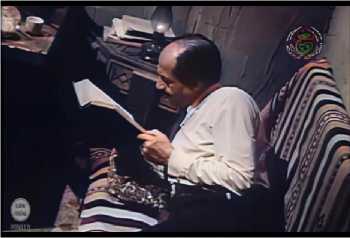
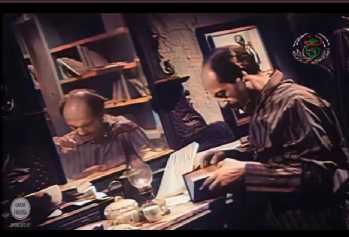
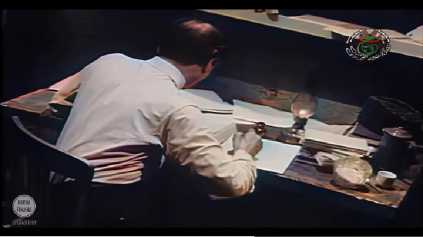
The hero Hamid Siraj represented that naughty consciousness, tormented by the worries of his homeland, it is the consciousness of alienation, its psychological fragments in a bruised homeland, and the consciousness of a lost self that found another homeland in books, It can be said that the recipient was able to own a history and cultural background of that paper hero, based on the backgrounds of the scene, which jumped into the recipient's imagination and he was able to trace it.
Hamid Siraj is a story of creativity and struggle, his freedom was assassinated by the colonial power, and his culture made him a target, and he found himself trapped between the world of prison and its mysteries, “This police repression for the crime of criticizing the authority is not enough in the eyes of the authority, the intellectual is always dangerous, and additional measures must be taken to avoid his evil.” (Mashasho, 2022, p. 1221), Hamid Siraj, unable to practice his marginalization and silence in the face of what was happening, revolted against his miserable reality, pushing his avant-garde to the people, says Mohammed Deeb: “The policeman stared with his small eyes at Hamid Siraj, Hamid noticed this sunken gaze, and the hall was filled with other policemen, their solemn voices echoing a moment ago, in the police headquarters, clouding the smoky atmosphere, and a stagnant odor of human odors clinging to the brown walls, this odor indicates that thousands of people have passed this place.”(Dib m. , 1970, p. 111)
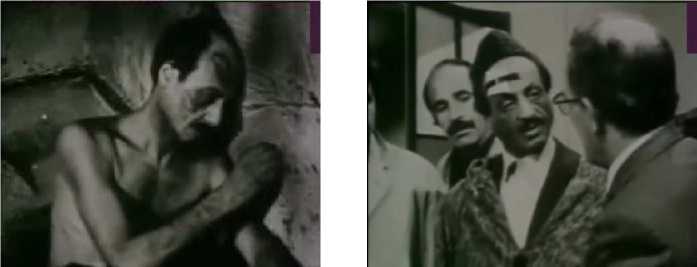
Through this cultural archetype, the film depicts an aspect of the ruptures that plagued the cultural milieu in Algeria, where Hamid Siraj's survival was fraught with peril,However, despite this alienation, abuse, and successive setbacks, the colonial authority did not succeed in emptying the intellectual of his cultural material, as he became more aware of his existence, his cause, and his role in the struggle, He did not lose his sensibility, his belief in something called Algeria, and he did not succumb to the power structure.
Conclusion:
At the end of this approach, and after delving into textual and scenic scenarios from the perspective of cultural criticism, we have drawn a number of conclusions and recommendations, This cultural approach revealed that cultural criticism is based on the power of culture and its effects on various institutions, the most important of which is cinema.
The cultural contexts of the textual scenarios were shaped by oppositional binaries of ego/French Other, man/woman, masculinity/femininity, culture/authority, The ego's relationship with the colonialist Other is manifested in forms of domination characterized by the Other's racism, superiority, and civilizational superiority.
The textual scenes have enriched their filmic and narrative space with feminine textures, characterized by a spirit of criticism and subversion of phallocentrism, and dedicated to a rebellious and active female self, away from stereotyping and coercion, The female has always represented a seductive aesthetic authority, which made her collide with the barrier of reality, the act of the body, and her entry into states of connection and disconnection from herself, Mohammed Deeb also gave multiple representations of the intellectual, revealing the cultural terrorism practiced against him and, on the other hand, drawing his representations away from the darkness, The intellectual could not stand on the margins of life, and his conscience was absent from the tragedies of his homeland, so he shifted from the stage of silence to the stage of open and public confrontation with the authority.
This cultural approach to narrative texts and movie scenes does not exclude their aesthetics, which have always been celebrated by literary criticism, as cultural criticism did not come as a destructive act, but rather a correction of some terminological concepts, We wanted to bring the text closer to the cinema and its audiovisual world because of its cultural diversity.Cultural criticism can be an alternative and a solution to bridge this gap, and the reluctance of filmmakers to invest in narrative codes, by giving it new mechanisms, In order to stimulate the audience's interest in the novel in its cinematic form, and to compensate for the scarcity of Algerian cinema production, researchers can expand the scope of the study of literary cinema, dive into the kernels behind the text, and dig into its textures.

